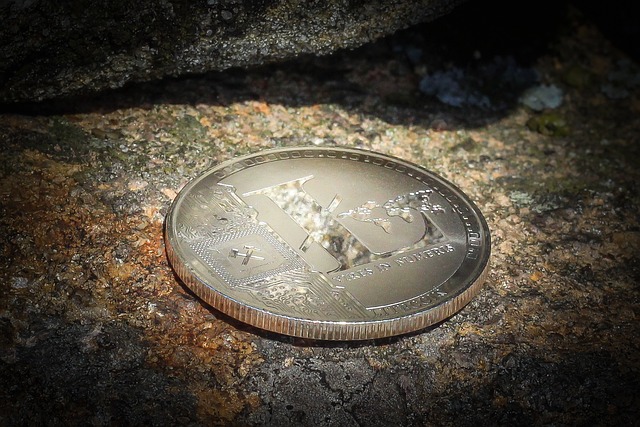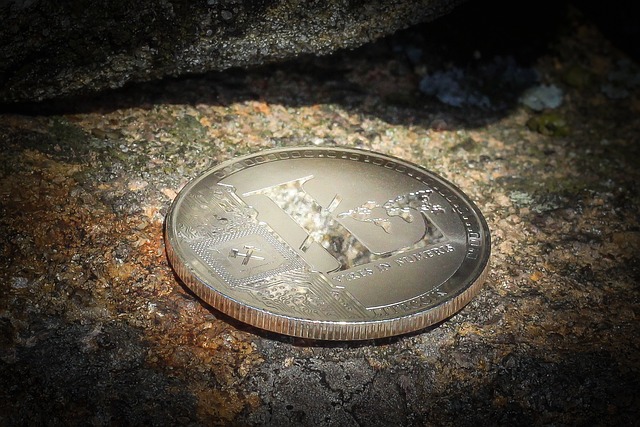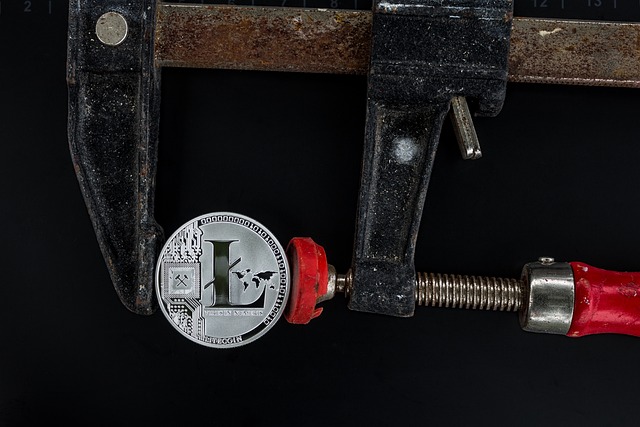Litecoin (often called "silver" to Bitcoin's "gold") utilizes a Proof-of-Work (PoW) consensus mechanism with optimized features, facilitating quicker transaction confirmations and decentralized mining compared to Bitcoin. Its unique Scrypt hashing algorithm reduces energy consumption and enables faster block times of around 2.5 minutes. However, Litecoin faces scalability challenges due to its limited transaction throughput, prompting developers to explore solutions for future enhancements.
“Dive into the inner workings of Litecoin, a leading cryptocurrency that has captivated the digital asset world. This article offers an exclusive peek at Litecoin’s unique Proof-of-Work system and its impact on security and efficiency. We explore how Litecoin’s algorithm safeguards against threats, compare it to Bitcoin’s approach, and analyze mining dynamics. Furthermore, we scrutinize the role of Proof-of-Work in shaping Litecoin’s scalability, providing valuable insights for crypto enthusiasts and investors.”
- Understanding Litecoin's Proof-of-Work System
- Security Measures in Litecoin's Algorithm
- Efficiency Comparison: Bitcoin vs Litecoin
- Mining Challenges and Rewards in Litecoin Network
- The Impact of Proof-of-Work on Litecoin's Scalability
Understanding Litecoin's Proof-of-Work System

Litecoin, often referred to as “silver” to Bitcoin’s “gold,” utilizes a Proof-of-Work (PoW) consensus mechanism similar to its more well-known counterpart but with distinct characteristics. At its core, PoW is a process where miners compete to solve complex mathematical puzzles, and the first to find the solution gets to add a new block of transactions to the blockchain. This method ensures the network’s security by making it computationally intensive, thus deterring malicious attacks.
In Litecoin’s case, the PoW system is designed for efficiency, aiming to offer faster transaction confirmations than Bitcoin. The puzzle in Litecoin involves finding a hash value that meets specific criteria, which is then checked and verified by other miners on the network. This mechanism not only maintains the network’s security but also provides a platform for mining operations, where individuals or pools of miners compete for rewards in the form of newly created Litecoins.
Security Measures in Litecoin's Algorithm

Litecoin, often referred to as the “silver to Bitcoin’s gold,” employs a unique Proof-of-Work (PoW) algorithm designed to enhance both security and efficiency. Unlike Bitcoin’s SHA-256 hashing, Litecoin utilizes the Scrypt algorithm, which is considered more accessible for miners due to its lower memory requirements. This makes Litecoin mining less centralized, as it’s easier for individual miners to participate, leading to a more decentralized network.
Security in Litecoin’s PoW lies in the algorithm’s ability to adjust difficulty levels dynamically based on the network’s computational power. This ensures that blocks are found at a predictable rate, preventing malicious actors from gaining an unfair advantage. Additionally, Litecoin’s shorter block times of roughly 2.5 minutes compared to Bitcoin’s 10 minutes provide faster confirmation times for transactions, enhancing the overall security and usability of the network.
Efficiency Comparison: Bitcoin vs Litecoin

Litecoin, often referred to as the “silver to Bitcoin’s gold,” offers a unique perspective in the cryptocurrency space due to its proof-of-work (PoW) consensus mechanism and several technical differences from its more well-known counterpart, Bitcoin. When comparing efficiency, Litecoin stands out with a few key advantages. Firstly, it employs a different hashing algorithm, Scrypt, which is considered less resource-intensive than Bitcoin’s SHA-256. This makes mining Litecoin more accessible to individuals using consumer-grade hardware, fostering a more decentralized mining ecosystem. As a result, the network enjoys lower energy consumption and faster block times compared to Bitcoin, making it an attractive option for those seeking a more environmentally friendly alternative.
Mining Challenges and Rewards in Litecoin Network

The Litecoin network, like Bitcoin, relies on a decentralized system of miners who compete to solve complex mathematical puzzles, a process known as proof-of-work (PoW). This mechanism ensures the security and integrity of the blockchain. However, mining in the Litecoin ecosystem presents unique challenges and rewards.
Litecoin’s block time is significantly faster than Bitcoin’s at 2.5 minutes compared to 10 minutes, which means miners have shorter periods to solve puzzles and claim rewards. This rapid block generation facilitates quicker transactions and enhances the network’s efficiency. The increased block speed also leads to more frequent and smaller rewards for miners, creating an environment that encourages a larger and more diverse mining pool, contrasting with Bitcoin’s more concentrated mining operations.
The Impact of Proof-of-Work on Litecoin's Scalability

Litecoin, like Bitcoin, relies on Proof-of-Work (PoW) consensus to secure its network and maintain the integrity of its transactions. However, this mechanism has direct implications for Litecoin’s scalability. While PoW allows for a decentralized validation process, it also introduces limitations in terms of transaction throughput. In comparison to Bitcoin, which has implemented Segregated Witness (SegWit) and other scaling solutions, Litecoin’s block size remains relatively small, leading to slower confirmation times for transactions. This is particularly evident during periods of high network activity, where the limited processing power of PoW can result in congestion and higher fees. Despite these challenges, Litecoin’s developers have been exploring various options to enhance its scalability, including implementation of SegWit and potential future upgrades to further optimize transaction processing.
Litecoin, as a pioneer in the cryptocurrency space, offers a unique proof-of-work system that balances security and efficiency. Its algorithm prioritizes transaction speed and energy consumption compared to Bitcoin’s more resource-intensive approach. The litecoin network’s mining challenges provide incentives for participants while ensuring the long-term sustainability of its blockchain. By comparing Bitcoin and Litecoin’s proof-of-work mechanisms, we uncover insights into how litecoin optimizes scalability, making it a compelling alternative in the ever-evolving cryptocurrency landscape.







Leave a Reply